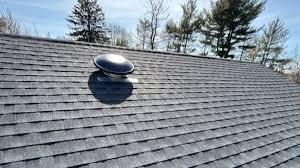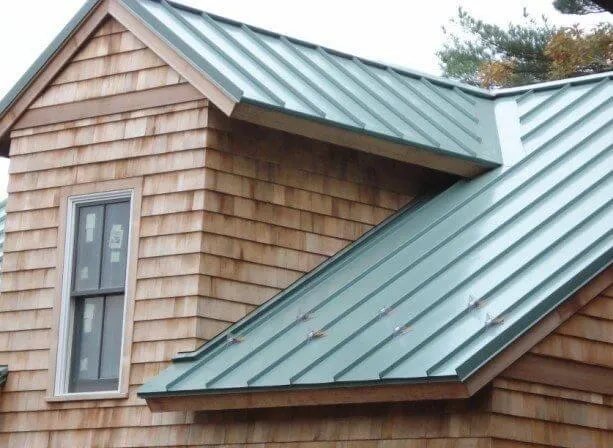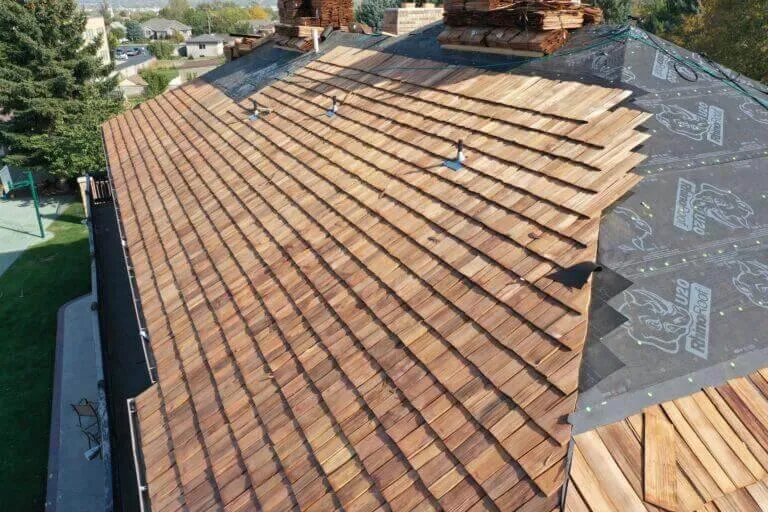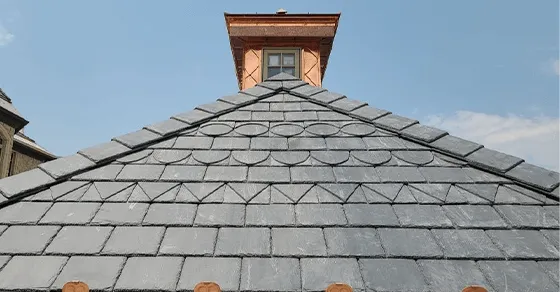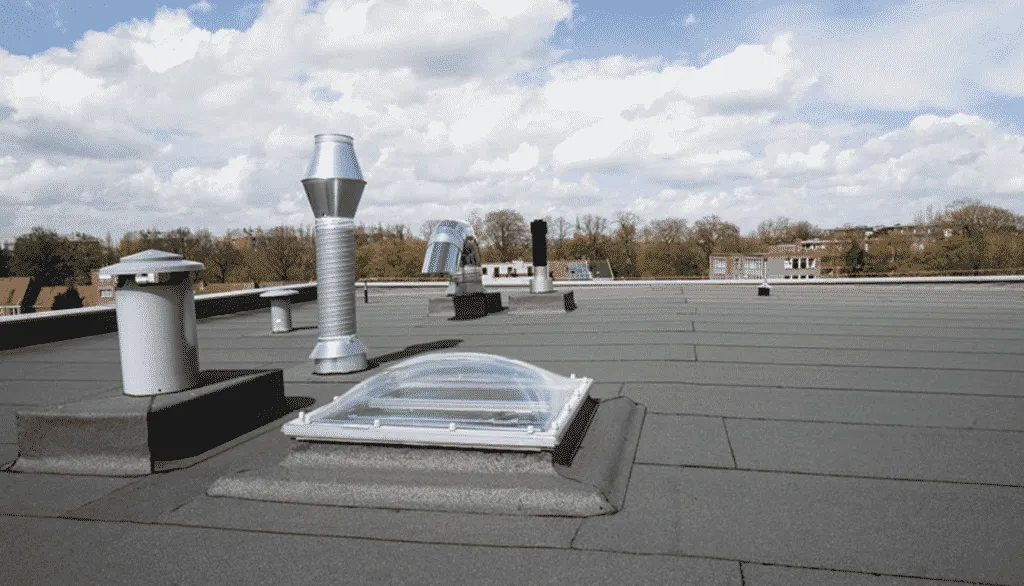TPO Roof Installation Carmichael
TPO Roof Installation Carmichael
If you're considering a new roof for your building, TPO roof installation in Carmichael is a solid option. TPO, or thermoplastic polyolefin, is known for its energy efficiency and cost-effectiveness, making it a popular choice for both commercial and residential properties. In this article, we’ll break down the benefits of TPO roofing, the installation process, and what you need to know to choose the right contractor for your project.
Key Takeaways
TPO roofing is energy-efficient and can lower utility bills.
It's a budget-friendly choice for commercial buildings.
TPO is environmentally friendly, contributing to sustainable building practices.
Choosing an experienced contractor ensures quality installation.
Regular maintenance can extend the life of your TPO roof.
Understanding TPO Roofing Benefits
Energy Efficiency of TPO Roofing
TPO roofing is making waves, and for good reason! One of the biggest selling points is its energy efficiency. Think about those scorching summer days in Carmichael. A TPO roof can seriously cut down on your cooling costs. The white, reflective surface bounces sunlight away, keeping your building cooler. This means your AC doesn't have to work as hard, saving you money and reducing your carbon footprint. It's a win-win!
Cost-Effectiveness for Commercial Properties
Let's talk money. Upfront, TPO roofing might seem like a significant investment, but when you look at the long game, it's actually super cost-effective, especially for commercial properties. Not only does it help lower energy bills, but it's also durable and requires less maintenance than some other roofing options. Plus, the installation process is often quicker, which means less downtime for your business. Here's a quick breakdown:
Lower energy bills
Reduced maintenance costs
Faster installation
Choosing TPO can free up capital for other business investments.
Environmental Impact of TPO
Thinking about the planet? TPO is a great choice. It's considered an environmentally friendly roofing option for a few reasons. First, its energy-efficient properties reduce energy consumption, which lowers greenhouse gas emissions. Second, TPO is recyclable, so at the end of its lifespan, it can be repurposed. Finally, the production of TPO involves fewer harmful chemicals compared to some other roofing materials. It's a step in the right direction for a greener future.
Feature | Benefit |
|---|---|
Reflective Surface | Reduces cooling costs, saves energy |
Recyclable | Minimizes landfill waste |
Fewer Chemicals | Less pollution during manufacturing |
The TPO Roof Installation Process
So, you're thinking about getting a TPO roof installed? Awesome! It's a pretty straightforward process, but here's a breakdown of what to expect.
Initial Consultation and Assessment
First things first, a roofing contractor will come out to your place. They'll take a look at your current roof, measure things up, and talk to you about your needs and expectations. This is where you can ask all your burning questions! They'll assess the roof's condition, check for any existing damage, and determine the best way to approach the installation. They'll also discuss things like insulation and ventilation to make sure your new roof performs well.
Preparation and Site Inspection
Before the actual installation begins, there's some prep work to do. This usually involves:
Removing the old roofing material (if there is any).
Cleaning the roof deck to ensure a smooth surface.
Making any necessary repairs to the roof deck.
Ensuring proper drainage.
They'll also inspect the site to make sure it's safe and ready for the crew and materials. This step is important to prevent accidents and ensure a quality installation.
Installation Techniques and Best Practices
Now for the fun part! TPO roofing can be installed in a few different ways, including:
Mechanically attached: This involves using fasteners to secure the TPO membrane to the roof deck.
Adhered: This method uses adhesives to glue the membrane down.
Ballasted: This is where the membrane is held in place by weight, like gravel or pavers.
The contractor will choose the best method based on your building's structure and local climate. They'll also use heat welding to seal the seams between the TPO sheets, creating a watertight barrier. It's important to make sure they follow industry best practices for overlapping and sealing the seams to prevent leaks down the road.
Getting a TPO roof installed isn't too complicated, but it's important to hire a good contractor who knows what they're doing. They'll guide you through the process and make sure you end up with a roof that lasts for years to come.
Choosing the Right TPO Roofing Contractor
Finding the right contractor for your TPO roofing project is super important. It's not just about getting the job done; it's about getting it done right. A bad install can lead to leaks, higher energy bills, and a whole lot of headaches down the road. So, how do you make sure you're picking someone who knows their stuff?
Experience and Credentials
First things first, check out their experience. How long have they been installing TPO roofs? Do they specialize in commercial buildings, residential, or both? A company that's been around the block a few times is more likely to have the know-how to handle any unexpected issues that might pop up. Also, make sure they're properly licensed and insured. This protects you if something goes wrong during the installation. Don't be afraid to ask for proof of insurance and license numbers. It's your right to know!
Customer Reviews and Testimonials
What are other people saying about them? Online reviews can be a goldmine of information. Check out sites like Yelp, Google Reviews, and the Better Business Bureau. Look for patterns. Are there a lot of complaints about poor workmanship or bad customer service? Or are people generally happy with their work? Take everything with a grain of salt, of course, but a consistent trend can tell you a lot. Also, ask the contractor for references. Talking to past clients can give you a real sense of what it's like to work with them. You can find the best roofing contractor in Carmichale by checking their reviews.
Warranty and Aftercare Services
A solid warranty is a must-have. It shows that the contractor stands behind their work. Find out what the warranty covers and how long it lasts. Does it cover both materials and labor? What happens if there's a leak a year after the install? Also, ask about aftercare services. Will they come back to inspect the roof after a certain period? Do they offer maintenance plans? Knowing that they'll be there for you down the road can give you peace of mind.
Choosing a roofing contractor is a big decision. Take your time, do your research, and don't be afraid to ask questions. The more informed you are, the better your chances of finding someone who will do a great job and leave you with a roof that will last for years to come.
Common Applications for TPO Roofing
Commercial Buildings
TPO roofing is super popular for commercial buildings, and there's a good reason for that. It's durable, reflective, and can handle the wear and tear that comes with a commercial environment. Think about large warehouses, retail spaces, and office buildings – these often have flat or low-sloped roofs, which are perfect for TPO. Plus, its energy efficiency helps keep those utility bills down, which is a big win for business owners. I've seen it used on everything from small shops to huge distribution centers. It's a solid, reliable choice.
Residential Properties
Okay, so TPO might not be the first thing that comes to mind for houses, but it's definitely gaining traction. Especially for homes with flatter roof sections, like additions or modern designs, TPO is a great option. It's lightweight, so it doesn't put too much stress on the structure, and it's available in different colors to match the overall look of the house. Plus, it's resistant to mold and mildew, which is always a good thing. I've noticed more and more homeowners opting for TPO roofing because it's a smart, long-lasting solution.
Industrial Facilities
Industrial facilities need tough roofing solutions, and TPO fits the bill perfectly. These buildings often have large, flat roofs that are exposed to all sorts of weather conditions and potential hazards. TPO's resistance to chemicals, punctures, and UV rays makes it ideal for these environments. It can withstand the harsh conditions of factories, manufacturing plants, and other industrial sites. Durability is key here, and TPO delivers. It's a no-brainer for anyone looking for a reliable roofing system for their industrial property.
TPO roofing is a versatile option that works well in various settings. Its durability, energy efficiency, and cost-effectiveness make it a smart choice for commercial, residential, and industrial buildings alike. Whether you're a business owner or a homeowner, TPO roofing is worth considering for your next roofing project.
Maintenance Tips for TPO Roofs

Regular Inspections and Cleaning
Okay, so you've got a TPO roof. Great choice! But like anything, it needs a little TLC to keep it in tip-top shape. Regular inspections are key. I'm talking at least twice a year – spring and fall are good times. Just walk around and look for anything out of the ordinary: punctures, tears, or debris buildup.
Cleaning is also important. You don't need anything fancy, just a soft brush and some mild soap and water. Gently scrub away any dirt or algae. Don't use harsh chemicals or pressure washers, as these can damage the TPO membrane.
Identifying Common Issues
Alright, so what kind of problems should you be looking for? Well, TPO is pretty durable, but it's not invincible. Here's a quick rundown:
Punctures: These can be caused by falling branches or hail. Even small punctures can let water in, so get them fixed ASAP.
Seam Issues: TPO roofs are made of sheets that are welded together. Check these seams for any signs of separation or cracking.
Blistering: Sometimes, air or moisture can get trapped under the membrane, causing blisters. If you see any, call a pro.
Debris Buildup: Leaves, branches, and other debris can trap moisture and promote algae growth. Keep your roof clear!
When to Call a Professional
Okay, so you've done your inspection and you've spotted something that doesn't look quite right. When is it time to call in the pros? Here's a good rule of thumb: if you're not comfortable fixing it yourself, or if the damage seems significant, get a professional roofer involved. It's always better to be safe than sorry.
Ignoring small problems can lead to bigger, more expensive problems down the road. A professional can properly assess the damage and make the necessary repairs to keep your TPO roof in good condition for years to come.
Here's a little table to help you decide:
Issue | DIY Fix? | Call a Pro? |
|---|---|---|
Small debris | Yes | No |
Minor scratches | Maybe | No |
Large punctures | No | Yes |
Seam separation | No | Yes |
Blistering | No | Yes |
Algae growth | Maybe | Maybe |
Cost Factors in TPO Roof Installation

Understanding the costs involved in TPO roof installation is important for budgeting and making informed decisions. Several factors influence the final price, so let's break them down.
Material Costs and Quality
The type of TPO membrane you choose will significantly impact the overall cost. Thicker membranes, while more expensive upfront, often provide better durability and longevity. Also, the manufacturer matters; some brands are known for higher quality and come with a premium price tag. Don't skimp here – investing in better materials can save you money in the long run by reducing the need for repairs or early replacement.
Labor and Installation Fees
Labor costs can vary widely depending on the contractor's experience, the complexity of the roof, and your location. Expect to pay more in areas with a higher cost of living. The installation method also affects labor costs. For example, fully adhered systems might require more labor than mechanically attached ones. Always get multiple quotes and make sure they clearly outline the labor charges.
Long-Term Savings and ROI
While the initial cost of a TPO roof might seem high, it's important to consider the long-term savings. TPO roofs are highly energy-efficient, which can lead to lower cooling costs, especially during those hot Carmichael summers. Plus, their durability means they require less maintenance and have a longer lifespan than some other roofing materials. This translates to a better return on investment over time.
Thinking about the future is key. A slightly more expensive TPO roof now could save you a bundle in energy bills and repair costs down the road. It's all about balancing the upfront investment with the long-term benefits.
Here's a simple table to illustrate potential savings:
Factor | Impact |
|---|---|
Energy Efficiency | Lower cooling costs |
Durability | Reduced repair frequency |
Lifespan | Fewer replacements needed |
Frequently Asked Questions About TPO Roofing
How Long Does TPO Roofing Last?
Okay, so you're wondering about the lifespan of a TPO roof? That's a smart question to ask! Generally, a well-installed and maintained TPO roof can last anywhere from 15 to 20 years, sometimes even longer. A lot depends on the quality of the material, the installation process, and how well you take care of it over the years. Think of it like this: you wouldn't expect your car to last forever if you never changed the oil, right? Same goes for your roof!
Is TPO Roofing Suitable for All Climates?
That's another great question! TPO roofing is pretty versatile, but it's not a one-size-fits-all solution. It performs exceptionally well in warmer climates because of its reflective properties, which help keep buildings cool and reduce energy costs. However, it also holds up well in colder climates, provided it's installed correctly. The key is to make sure your contractor knows what they're doing and uses the right installation techniques for your specific climate. For example, in areas with heavy snow, you'll want to ensure proper drainage to prevent ice dams. So, while TPO is generally a good choice, always consider your local weather conditions.
What Are the Common Misconceptions?
There are definitely a few misconceptions floating around about TPO roofing. One big one is that it's not as durable as other roofing materials. That's simply not true! While it might not be as thick as some other options, TPO is incredibly resistant to punctures, tears, and UV damage. Another misconception is that all TPO membranes are the same. Nope! There are different grades and thicknesses available, so it's important to choose the right one for your building and budget. Finally, some people think TPO is only for commercial buildings. While it's super popular for commercial properties, TPO roofing can also be a great choice for residential homes, especially those with flat or low-sloped roofs. Just make sure you do your research and work with a reputable contractor!
Wrapping Up Your TPO Roof Installation Journey
So, there you have it! Installing a TPO roof in Carmichael can be a smart move for your property. It’s energy-efficient, cost-effective, and built to last. Whether you’re a business owner or a homeowner, choosing the right team for the job makes all the difference. Remember, from the initial consultation to the final touches, a good roofing company will guide you through each step. If you’re ready to get started or just have questions, don’t hesitate to reach out. We’re here to help you every step of the way!
Frequently Asked Questions
How long can I expect my TPO roof to last?
TPO roofs usually last about 20 to 30 years with proper care.
Is TPO roofing good for all weather conditions?
Yes, TPO roofing works well in many climates, including hot and cold weather.
What are some common myths about TPO roofing?
A common myth is that TPO is not durable, but it is actually quite strong and long-lasting.
Can TPO roofing be installed over my old roof?
In many cases, TPO can be installed over an existing roof, but it depends on the condition of the old roof.
Is TPO roofing environmentally friendly?
Yes, TPO roofing is made from recyclable materials and is energy-efficient.
How do I maintain my TPO roof?
Regular inspections and cleaning are important to keep your TPO roof in good shape.

Contact Us To Get A Free Quote!
Roofing We Install In Carmichael


